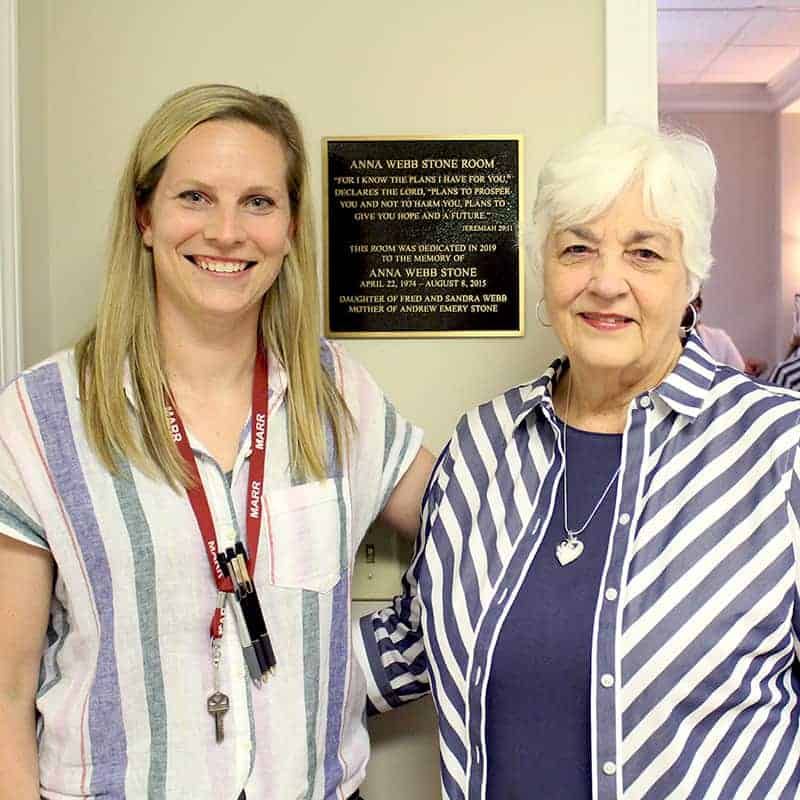Emotional Sobriety | The True Goal of Recovery
By Matt Shedd
Those unfamiliar with the language used in 12 Step communities may have never heard the term “emotional sobriety.” But this, perhaps more than anything else, is the goal we have for our clients at MARR.
The term comes from the founder of Alcoholics Anonymous, Bill Wilson, who refers to emotional sobriety as going beyond mere abstinence from alcohol. In emotional sobriety the person begins to cultivate what he describes as “real maturity and balance…in our relations with ourselves, with our fellows, and with God.”
Like most processes of spiritual growth, the path to emotional sobriety is one of letting go: letting go of our ideas of who we think we are, what we deserve, who we think others think we are, and anything else that blocks our acceptance of our lives as they are.
The spiritual maturity that Bill described is not typically achieved by the means that we anticipate. It is not usually found through the heroic fantasy we may have envisioned of helping to “save the world” and showing everyone how wonderful we are. It is found through heartbreak, failure, and loss–a shattering of the false ideas of who we think we are. The good news is that if we trust the path, the losses and failures that we thought would destroy us become the firm foundation of a new identity that is not subject to constant change.
The path to emotional sobriety can seem like quite the opposite for the person who is on it. It can feel like a path to emotional chaos. It usually starts with the feeling that the whole world is falling apart. All the firm grips and footholds we used to have on our lives are no longer there. That is why the mentorship and guidance of a sponsor and others further along in the 12 Step process is so essential. This support provides the connection outside of one’s own feelings that can sustain us through these emotional rough patches.
External Crisis
An external crisis often precipitates the process of getting into recovery. With our clients coming into MARR, they are often facing the consequences of years of substance abuse. These consequences can take many forms: ultimatums from family members, legal consequences from the court, the threat of losing a job or professional license, or the possibility of losing custody of a child, to name just a few possibilities.
These consequences are often dramatic, urgent, and loud. They are circumstances that demand immediate attention. The consequences are so disruptive to “business as usual” that they can summon an uncommon willingness from our clients to take the dramatic step of checking into long-term treatment.
Although painful and shocking, this external crisis is usually only the preface to a more significant internal crisis where lasting recovery can actually begin.
Internal Crisis
The external consequences are often necessary to get people to the place where they have a genuine spiritual crisis forcing them to question their identity.
Once they are in treatment, MARR clients are no longer able to rely on things outside of themselves to give them a sense of their identity. Separated from their jobs, houses, families, and daily routines, they no longer have easily ready answers for who they are. Although not as dramatic as the chaotic circumstances that usually cause people to check into treatment, this crisis can sometimes be even more painful.
The person at this stage of their recovery can begin to see the discontentedness that has been underneath the alcoholism or addiction.
In the treatment environment at MARR, the client no longer has the constant activity of drinking, using, and cleaning up of consequences. The causes underneath the continued substance use can now be exposed.
Normal life is now the problem, and the client gets the opportunity to see this up close. The person in early recovery can now see what Bill Wilson calls the “false dependencies,” which get in the way of emotional sobriety, specifically “a demand for the possession and control of the people and the conditions surrounding me.”
When these dependencies on being able to control people and conditions were threatened previously, drugs or alcohol served as an effective balm to cover over the pain of not having these expectations met. Now, without the temporary distraction of substances, clients can see how frequently these attempts to control people and circumstances undermine peaceful, contented living.
Unrealistic expectations make it impossible for one to stay emotionally balanced and weather the ups and downs of daily living. For this reason, much of the treatment at MARR focuses on the daily emotions our clients encounter in the small things: grocery shopping, negotiating car rides, making weekend plans as a community, to name a few.
Our clients practice negotiating these situations in a protected environment where the stakes are lower, so when they leave they are better prepared to handle weightier matters.
Outgoing Love
Bill Wilson describes the basis to longstanding emotional sobriety in the following way,
“This seems to be the primary healing circuit: an outgoing love of God’s creation and His people, by means of which we avail ourselves of His love for us.”
This may sound more “religious” than some of our clients might feel comfortable with, but what this looks like in practice does not have to be “religious” at all. The general sentiment of emotional sobriety happening through “outgoing love” begins to show up in the relationships they have with the therapeutic community they are living with here at MARR.
The power of community provides the possibility of basing one’s identity on something bigger and more stable than one’s own constantly changing feelings.
Life is no longer about having to figure things out on one’s own, which is an emotionally volatile situation to be in. They are now able to rely on the protection of the community.
With the shift in focus to thinking of the wellbeing of others, the individual starts to experience a sense of their own wellbeing on a deeper experiential level. They are no longer simply doing damage control around the consequences of their own actions, but are actually looking out for the welfare of others, who are in turn looking out for them.
It is in the practice of daily life with the therapeutic community at MARR that our clients experience what Bill was talking about when he stated, “My stability came out of trying to give, not out of demanding that I receive.”
Source:
Bill Wilson, “Emotional Sobriety: The Last Frontier.” The Grapevine, January 1958. Accessible at http://silkworth.net/pages/aahistory/general/emotionalsobriety.php






